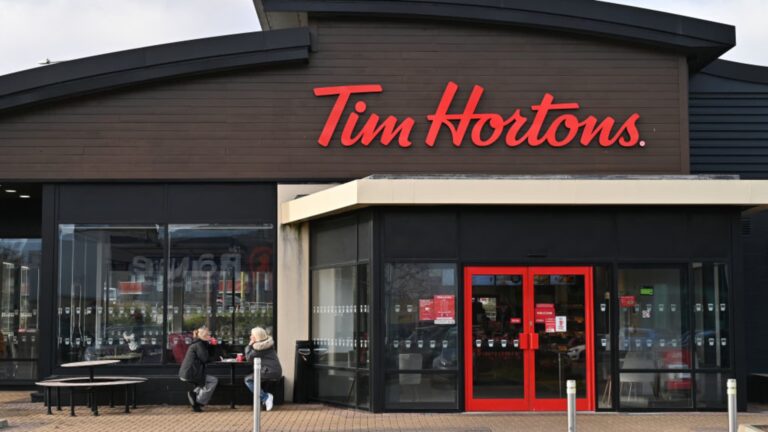A general view of a Tim Hortons Drive-Thru coffeehouse and restaurant at Lakeside Retail Park on February 5, 2024 in Grays, United Kingdom.
John Keeble | Getty Images
Restaurant Brands International on Thursday reported quarterly earnings and revenue that beat analysts’ expectations, fueled by growth of its international restaurants and Tim Hortons.
Combined, the two divisions account for roughly 70% of the company’s earnings, according to CEO Josh Kobza.
Like many restaurants, the company has seen low- and middle-income consumers spend less on dining in recent quarters. Diners didn’t change their behavior in the third quarter, but executives credited sticking to their strategy and avoiding the so-called value wars for the company’s strong quarterly performance, particularly at Burger King’s U.S. restaurants.
“If you look at our results, we’re doing well despite some of those trends,” Kobza told CNBC.
Here’s what the company reported compared with what Wall Street was expecting, based on a survey of analysts by LSEG:
- Earnings per share: $1.03 adjusted vs. $1 expected
- Revenue: $2.45 billion vs. $2.4 billion expected
Restaurant Brands reported third-quarter net income attributable to shareholders of $315 million, or 96 cents per share, up from $252 million, or 79 cents per share, a year earlier.
Excluding transaction costs and other items, the company earned $1.03 per share.
Net sales rose 6.9% to $2.45 billion. The company’s same-store sales, which only track the metric at restaurants open at least a year, grew 4%.
Restaurant Brands’ international segment was the star of the quarter, reporting 6.5% same-store sales growth. That topped the StreetAccount consensus estimate of 4.4%. The company’s restaurants in Western Europe, China and Japan fueled the segment’s same-store sales growth, Kobza told CNBC.
Tim Hortons reported same-store sales growth of 4.2%. The Canadian coffee chain has been leaning more into food offerings to drive sales and traffic at its restaurants. Executives also said an improved iced latte is driving sales of cold drinks, which grew 10% in the quarter.
Burger King’s same-store sales increased 3.1%, showing that the chain’s turnaround strategy in the U.S. is paying off for the business. Burger King has focused on restaurant renovations and marketing based on core menu items like the Whopper to revive domestic sales. The remodeled restaurants are paying off for franchisees as well, which is lifting operators’ profitability, according to Burger King U.S. President Tom Curtis.
Looking ahead, the burger chain is planning to lean into “product elevation,” Curtis said in an interview.
“I think that’s important in an environment where you hear a lot about shrinkflation, and you hear a lot about cost cutting. So for us, we’re going to be zigging while others are zagging,” he added.
Popeyes was the only Restaurant Brands division to report same-store sales declines. The chicken chain saw its same-store sales shrink 2.4%. In recent quarters, it…
Read More: Restaurant Brands International (QSR) Q3 2025 earnings



